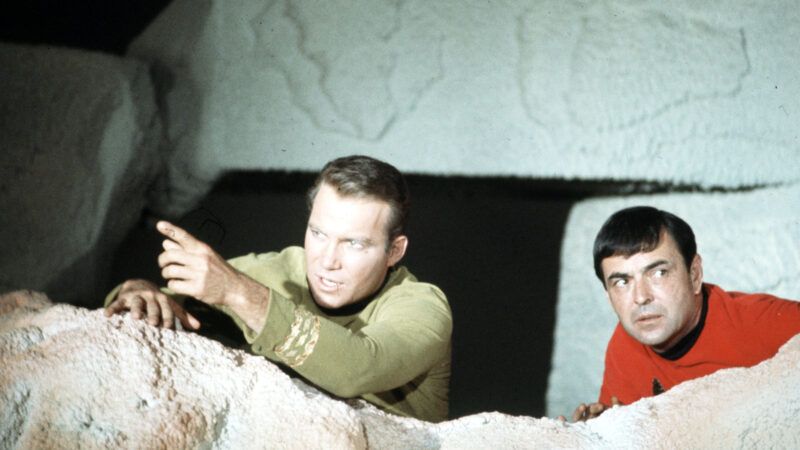Tia Mowry’s Favorite Books
Tia Mowry Shares Her All-Time Favorite Books in ‘Shelf Portrait’
She has a gorgeous library in her bedroom!
By Marie Claire
Tia Mowry’s chic library, located in her room (a dream!), is filled with a variety of books alongside her “shrine of accomplishments,” as seen in Marie Claire’s latest episode of Shelf Portrait, where celebrities, influencers, and famous bookworms invite us inside their homes to show off their personal libraries.
Mowry proudly has her first book, Oh, Baby!, displayed on her shelf, as well as candles, flowers, sage, and pictures. In the video, she reveals her five favorite books of all time are James Frey’s A Million Little Pieces (everybody is struggling with something in their life and this books speaks to that), Rhonda Byrne’s The Secret (she says it changed her life!), Don Miguel Ruiz’s The Four Agreements (it gave her so much wisdom), Paulo Coelho’s The Alchemist (it’s all about looking for the signs), and Elizabeth Gilbert’s Eat Pray Love (the ultimate lesson that women can create their own journey).
Magnes and The Real Porsche
Street Racing Through LA With Magnus Walker, The World’s Most Notorious Porsche Collector
The stories behind Magnus Walker and Daniel Malikyar’s new photo series are almost better than the images themselves. Almost.
BY ALEX LAUER

Magnus Walker, left, in his 277, a highly modified Porsche 911. Daniel Malikyar via Santo Gallery
“Yesterday I drove a $4 million Bugatti Chiron Pur Sport, which was really impressive,” says Magnus Walker, “but it’s a car that is way out of my league.”
From looking at his Instagram, you wouldn’t believe any car is out of Magnus Walker’s league. One day he’s cruising around in a six-figure Ferrari in Los Angeles, another he’s testing the chops of the new Ford Bronco in the middle of nowhere. You see, Walker has become one of the most recognizable Porsche collectors and customizers in the world — known as much for his signature “Outlaw” builds as his signature dreadlocks and Gandalf beard — and with that repute comes the opportunity to drive all manner of rarefied automobiles, if not own them. Despite that access, there’s still plenty left on his vehicular bucket list, and that’s where Daniel Malikyar comes in.
Together, the two collaborated on a new photography series in which they set out to “[capture] the fine art of urban racing” in L.A. The images, which are available for purchase through Santo Gallery in limited-edition prints starting February 19, sit at the intersection of old-school hot rods in car magazines and new-school car porn on Instagram feeds. That dichotomy comes straight from the creators: Walker is a 53-year-old gearhead and British expat, while Malikyar is a 26-year-old Afghan-American virtuoso, the co-founder of Santo with a portfolio of gripping photography and film work that belies his years.
Those Bastards!
Did an Alien Life-Form Do a Drive-By of Our Solar System in 2017?
By Avi Loeb

On Nov. 12, 2018, Avi Loeb, then the chairman of the astronomy department at Harvard, and a young research associate, Shmuel Bialy, published a paper in the highly prestigious Astrophysical Journal Letters arguing that humans may have discovered the first evidence of alien technology in the form of a mysterious object called Oumuamua that had streaked through the solar system the previous fall.
Reporters flocked to his door. I was not one of them, because I thought the claim was clever and bold, but far-fetched, and I still do, much as I wish it were true. Few of his scientific colleagues agree with him, as Loeb will be the first to tell you in his new book, “Extraterrestrial,” which is part graceful memoir and part plea for keeping an open mind about the possibilities of what is out there in the universe — in particular, life. Otherwise, he says, we might miss something amazing, like the church officials in the 17th century who refused to look through Galileo’s telescope.
“Are we, both scientists and lay people, ready?” he asks in his introduction. “Is human civilization ready to confront what follows our accepting the plausible conclusion, arrived at through evidence-backed hypotheses, that terrestrial life isn’t unique and perhaps not even particularly impressive? I fear the answer is no, and that prevailing prejudice is a cause for concern.”
Oumuamua — Hawaiian for “scout” — was first noticed by a telescope on the island of Maui on Oct. 19, 2017, when it was already on its way out of the solar system, having passed closest to the sun a month before. It had come from outside the solar system, from the direction of the star Vega.
Gaming With Spotify
How to Bust Your Spotify Feedback Loop and Find New Music
Does the algorithm know you too well? Here’s how to shake up your recommendations for a more varied listening experience.
 PHOTOGRAPH: JUSTIN PAGET/GETTY IMAGES
PHOTOGRAPH: JUSTIN PAGET/GETTY IMAGES
IF YOU’RE LISTENING to music right now, chances are you didn’t choose what to put on—you outsourced it to an algorithm. Such is the popularity of recommendation systems that we’ve come to rely on them to serve us what we want without us even having to ask, with music streaming services such as Spotify, Pandora, and Deezer all using personalized systems to suggest playlists or tracks tailored to the user.
Generally, these systems are very good. The problem, for some, is that they’re perhaps really too good. They’ve figured out your taste, know exactly what you listen to, and recommend more of the same until you’re stuck in an endless pit of ABBA recordings (just me?). But what if you want to break out of your usual routine and try something new? Can you train or trick the algorithm into suggesting a more diverse range?
Fred Segal Gone
Fred Segal Dies: Iconic Retailer Who Defined L.A. Fashion Was 87
By Bruce Haring
Fred Segal, who was a fashion icon in Los Angeles for more than 60 years, has died because of complications from a stroke, his representatives confirmed Friday. He was 87.
“In 1961, Fred Segal created a retail scene that defined Los Angeles fashion and sparked a revolutionary shift in style that has transcended the last six decades. Fred Segal pioneered the shop-in-shop concept and experiential retail, resulting in a brand built on heritage, inclusivity and love that changed the face of retail forever,” read a statement.
Fred Segal’s became known as a high-end fashion boutique with a young and hip vibe. The stores lured customers including the Beatles, Elvis, Diana Ross, the Jackson Five, Nicole Kidman and Jefferson Airplane, among many others.
When Segal opened his West Hollywood store, 85 percent of the inventory in the 350‑square‑foot store was blue. Later, in a 700-square-foot store on Santa Monica Boulevard, Segal’s form-fitting fashion was a big hit. That led to a jeans-only store on Melrose at Crescent Heights in 1960 in the heyday of that retail strip, and he soon created the first “Jeans Bar.” Fred Segal’s denim designs for men and women were selling for $19.95 when jeans were typically $3.
Etna Anew
Mt Etna’s latest eruptions awe even those who study volcanos
ROME (AP) — Mount Etna, Europe’s most active volcano, has awed even seasoned volcanologists in recent days with spectacular spurts of lava lighting up the Sicilian sky each night.
The latest eruption overnight petered out by around 0900 GMT Tuesday, according to Italy’s National Institute for Geophysics and Volcanology.
For over a week, Etna has been belching lava, ash and volcanic rocks on a regular basis. The nearby Catania Airport closed temporarily, and residents of the town of Pedara said it appeared one day last week as if it were raining rocks as a thick blanket of ash covered the town.
Frankly, I sort of like my balls.
Inside the World of Backstreet Castrators, Cutters and Eunuch-Makers
The Daily Beast reports from the hidden world of backstreet castrations, where people desperate to have genitalia altered or removed undergo risky, illicit operations.
by Mark Hay

In 2018, William, a thoughtful, handsome guy in his late twenties with an eye for design and architecture, took a train up from his home in Baltimore to New York to meet a man he’d been chatting with online for a few months. They had dinner, checked into a hotel near Times Square with a nice view of the Hudson River, and got all showered up and clean. Then, the man placed a restrictive band around William’s genitals and injected them with lidocaine. Once William was fully numb, the man sliced open his scrotum, cut off one of his testicles, and cauterized the testicular artery. He would have cut out William’s remaining testicle as well, but his cauterizing tool died. So, he sutured William up instead.
This is not a horror story of an internet date gone Lifetime original movie-level wrong. The man William met was a cutter, someone who does underground surgeries on people who want to modify or remove part or all of their genitals. He had, to William’s knowledge, cut off over a dozen men’s testicles by that point, with few if any complications. William, who learned at 17 that he was born with XXY chromosomes and has intersex characteristics, identifies as a gender neutrois male, a non-binary identity, and uses he/him pronouns. He wanted this cutter to help him start a physical transition to align his body with this identity, a process he hopes will eventually leave him with a fully smooth groin.
Mad Madlib
from The New Yorker
The Obsessive Beat-Making of Madlib
The producer’s new album, “Sound Ancestors,” a collaboration with Four Tet, distills his eclectic, globe-trotting approach to sampling.
By Hua Hsu

Madlib has always seemed more concerned with making music than with the question of what to do with it. The forty-seven-year-old producer and multi-instrumentalist has estimated that he makes hundreds of beats a week, many of which he never shares with anyone. His beats are a form of homage. He listens carefully to an old record, trying to squeeze every musical possibility out of it, to follow every path not taken. Sometimes it’s therapeutic. The week that Prince died, Madlib mourned by making tracks built on Prince samples. Following the death of his collaborator J Dilla, and then that of MF DOOM, he stayed awake for days, making hundreds of hours of music. Since the nineties, Madlib has essentially been building a private, ever-expanding library of beats, which spans everything from hip-hop, jazz, and soul to German rock, industrial music, Brazilian funk, and Bollywood. He has released dozens of albums under just as many aliases. Sometimes the aliases splinter off to form side projects. For Madlib, making music is as elemental as eating or sleeping, though he claims to do very little of the latter.
Madlib, born Otis Jackson, Jr., was brought up in Oxnard, California. His father was a soul singer, and his mother was a pianist. As a teen-ager, he and his brother, Michael, who raps and produces as Oh No, formed a hip-hop collective called the Crate Diggas Palace. Madlib’s first major release came in 1999, when the Lootpack, a trio made up of Madlib and his high-school friends Wildchild and DJ Romes, put out “Soundpieces: Da Antidote!” In the next few years, he began to channel his work ethic into a universe of alter egos. One of his most famous albums, “The Unseen,” from 2000, which is credited to an alter ego named Quasimoto, was the result of an experiment. He didn’t like the sound of his own voice, so he pitch-shifted his vocals and rapped from the perspective of a slick-talking, squeaky-voiced alien prankster with a fondness for marijuana.
In the early two-thousands, Madlib began applying the logic of hip-hop, where anything can be taken apart and put back together, to jazz music. He started by playing the melodies of his favorite tunes on the keyboard. Then he taught himself other instruments, which he played alongside samples, becoming a one-man ensemble. He invented a roster of jazz musicians with names like Monk Hughes, Ahmad Miller, and Joe McDuphrey. He wasn’t a virtuosic soloist; rather, his work skillfully pursued hazy textures and stoned vibes. His jazz noodling culminated in the excellent album “Pardon My French,” which came out last year—one of three credited to him in 2020. It was released by a group called the Jahari Massamba Unit, a collaboration between Madlib and the Detroit drummer and producer Karriem Riggins (who is real).
Space Court
Dubai creates ‘space court’ for out-of-this-world disputes
DUBAI, United Arab Emirates — Dubai announced Monday the creation of a “space court” to settle commercial disputes, as the UAE—which is also sending a probe to Mars—builds its presence in the space sector.
The tribunal will be based at the Dubai International Financial Centre (DIFC) Courts, an independent British-inspired arbitration centre based on common law.
GameStop Spring
What the Arab Spring Can Teach Us About GameStop
Ten years ago, democracy protesters used social media to organize against an oppressor. But ultimately, the powerful came out ahead.
by NOAM COHEN

WHEN I FIRST learned of the campaign by folks on Reddit that has wreaked havoc on wealthy hedge funds looking to profit off struggling companies like the video game retailer GameStop, my mind went back in time. Not all the way back to 2008, where many members of the subreddit WallStreetBets—and those living vicariously through their mayhem—source their anger at the financial system. That was the year, of course, of Too Big to Fail, when many of the most powerful and profligate banks and trading firms were saved from ruin for the sake of keeping the global economy operating. Instead, I thought of the democracy protests in Tahrir Square in Cairo, which began almost exactly 10 years to the date before the GameStop hijinks, January 25, 2011.
These protests, part of a regional movement to overthrow autocratic governments known as the Arab Spring, were a high-water mark for the idea that the internet would free the world. At the time, it was difficult not to get swept up by the belief that a band of activists using social-network tools could topple an oppressive regime. Ten years later, those hopes should have largely evaporated. Rather than bringing democratic institutions to countries, like Egypt, long denied them, the internet often works in reverse, destabilizing democracy around the world and expanding inequality. Yet each time an online group tries to stick it to the Man, we allow ourselves to dream again.
Penisnapping
Bloke has his penis held to ransom by hackers who took control of digital chastity belt
Qiui, the company which makes the Cellmate cage, says it believes that a true chastity experience is one that ‘does not allow the wearer to have any control over’
By Joshua Smith

A man had his penis held to ransom for more than £700 after hackers locked a digital chastity belt he was wearing.
Sam Summers had been wearing a Qiui Cellmate chastity cage, which connects to the internet, when he received a strange message on the product’s app on his phone.
Someone said they had taken control of the chastity belt and that they wanted around $1,000 (£729) in Bitcoin to give him back control of the device.
“Initially, I thought it was my partner doing that. It sounds silly, but I got a bit excited by it,” Sam Summers told VICE.
But when Same called his partner and told her their safe word, he was shocked to find out it wasn’t her.
That’s when he realised, to his utter horror, that he had been hacked.
His penis was locked in the cage, and he had no way to get it out because the belt has no manual override.
“Oh, s**t, it’s real,” Sam said. “I started looking at the thing.
“There’s no manual override at all. It’s a chastity belt, I guess it kind of shouldn’t have an override.
Hacking Helicopters
Berlin man caught directing flight traffic with radio

BERLIN (AP) — A man has been arrested in Berlin on allegations he made radio contact with air traffic, including police helicopters, and gave fake flight orders while impersonating an aviation official, German police said Friday.
The 32-year-old, whose identity wasn’t released in line with German privacy laws, was arrested Thursday night in the capital’s eastern Koepenick district, police said.
Police were able to swoop in on his apartment after he made contact with a police helicopter that was dispatched to the neighborhood in the hope of flushing him out.
During a search of his home, police found two radios that transmitted on the frequencies needed to make contact with aircraft.
[ click to continue reading at AP ]
The Reddit Boys Revenge
“You Meet Insanity With Insanity”: The GameStop Redditors Who Upended Wall Street Are Doubling Down
Wall Street can seem like a citadel, so it is with unreserved glee that many have kept tabs on the GameStop saga this week. For once, the underdogs were getting flush—and even better, seemingly screwing over hedge funds in the process. On WallStreetBets, the Reddit forum where it all began, retail traders are rallying one another to stay aggressive and hold against downward pressure on the stock, whose value was sinking by Thursday afternoon. An I.T. worker in Atlanta who bought in on Monday after reading about GameStop on the forum said he watched the value of his position lose and then regain around $100,000 over the course of 24 hours, and he’s not abandoning his shares anytime soon.
“It does feel like a gang-up on Wall Street, which has suffered no repercussions from the pandemic,” the I.T. worker said. “Jobless claims, jobless claims, every week we see them going higher and higher, all the chaos with Brexit, all the stuff that’s happening. Like, we can’t go outside, but you guys are making a profit. What the fuck?” On WallStreetBets, it’s to no small amount of admiration that DeepFuckingValue, one of the first users to go bullish on GameStop, who has since been identified by the Daily Mail as 34-year-old financial adviser Keith Patrick Gill, continues to post his daily tally from staying long on the video game store chain. Midweek, that was almost $50 million (from a reported initial investment of some $53,000), but the next day, it had dived by more than $14 million.
What happened was this: A few hedge funds, reading what they thought was the writing on the wall, bet against GameStop by shorting its stock, predicting that a brick-and-mortar store had no future in the COVID-delineated online economy. So retail traders bought the stock in droves and pushed its value up, knowing that traders would eventually have to buy the stock back at the higher price in order to cover their positions, losing money in the process. GameStop isn’t the first short squeeze Wall Street has seen, but it’s one of the first that originated in the online forums where day traders using popular platforms like Robinhood have coalesced during the pandemic. Some major funds were caught in the squeeze, including Melvin Capital and Citron Research, and total losses from the short positions in U.S. companies were estimated to be more than $70 billion as of Thursday. Redditors rejoiced over Wall Street’s pain, and CNBC’s Jim Cramer said the masses ganging up against institutional money could be finance’s new paradigm. “There is definitely a level of nervousness here,” said a hedge fund manager named Westley, who asked not to have his last name published.
Life on Eartha
Transformative Life
Kitt’s 1989 autobiography, Confessions of a Sex Kitten, tracks an icon’s incredible journey from abused child to outspoken star.

Eartha Kitt was many things: a nightclub chanteuse who could sing in seven languages; a movie star; an activist, dancer, singer, comedian…and Catwoman. She created iconic cultural moments, purring hits like “Santa Baby,” “I Want to Be Evil,” and “C’est Si Bon.” Her lovers were American aristocrats like Charles Revson, the founder of Revlon (he even created a lipstick shade for her) and film industry scion Arthur Loew Jr. An eccentric grand dame, swathed in Balmain and sipping champagne, she was a cabaret legend, creating magic on the stages of The Carlyle and the Persian Room.
But Kitt’s greatest creation was herself. In her 1989 autobiography, Confessions of a Sex Kitten, she tells the epic story of her self-made life in poetic, precise prose. “I have no idea how old I am. Believe it or not, I have no paper that says I was ever born,” she wrote. “Maybe that’s why they call me a legend, because I don’t really exist.”
Bernie Sits
He Made a Viral Bernie Meme Site. Now He Has to Keep It Going
Nick Sawhney’s “Bernie Sits” puts Sanders anywhere on Google Street View.

BY 9 PM ET last night, Nick Sawhney knew he was in trouble.
Just a half hour earlier, still steeped in the afterglow of Joe Biden’s inauguration, Sawhney had pushed live a website that lets you put a viral image of Bernie Sanders—seated, mittened, alone—atop any Google Street View image. The meme had already reached a fever pitch, with the Photoshop faithful placing the senator from Vermont in everything from Mortal Kombat to Edward Hopper’s Nighthawks. But Sawhney’s creation, born out of a group chat with friends, added layers of personalization, ease of use, and absurdity; because it fixes Sanders in the same coordinates regardless of his location, he occasionally looks as though he’s floating, or sitting on a car, or in an otherwise unlikely orientation.
The site gained traction on Twitter slowly at first; friends retweeting, then friends of friends. A few verified accounts joined in. And then, as wonderful and perfectly timed internet creations do, it snowballed.
Space Smuggling
Space, the Final Smuggling Frontier
In a glimpse of a gloriously rule-breaking future, contraband has boldly gone where more is sure to follow.

On Christmas day, we learned that the ashes of James Doohan, the actor who played Scotty in the original Star Trek series and several movies, were surreptitiously brought to the International Space Station (ISS) in 2008. For fans of the classic science fiction franchise, it was a fitting extraterrestrial resting place for the man who played a beloved character. For those with dreams of a free life beyond Earth’s gravity, though, it was also a hint that the roguish spirit of Han Solo and Malcolm Reynolds has already taken root in humanity’s ventures into space.
“Now it can be revealed that in death the actor who played the starship’s chief engineer has travelled nearly 1.7 billion miles through space, orbiting Earth more than 70,000 times, after his ashes were hidden secretly on the International Space Station,” the Times of London reported on December 25. “‘It was completely clandestine,’ said Richard Garriott, a video game entrepreneur who smuggled James Doohan’s ashes on to the ISS in 2008 during a 12-day mission as a private astronaut.”
The Death of Flash
Why the end of Flash animation marks the end of an era for creativity on the web

It was a tale of sex and death and Teletubbies.
In 1998, programmer and animator Tom Fulp released an online video game titled “Teletubby Fun Land” that featured the characters from the British children’s television program getting drunk and stoned and engaged in acts of devil worship. One of the game’s narratives showed a version of Po (the red one) getting it on with a sheep.
As the site grew in popularity, the BBC, which aired “Teletubbies,” grew appalled. In 1999, the British broadcaster demanded that Fulp, then a college student, take the site down. He initially acquiesced, but within days, “Teletubby Fun Land” was right back up — with Fulp noting that parody was protected under laws governing free speech.
“As far as I have always known, Mad magazine makes a living out of doing the same thing,” Fulp told Wired at the time. “I am pretty sure U.S. laws protect me.”
Fripp & Toyah Do Black Dog
THE ODYSSEY Cancelled
Even Homer Gets Mobbed
A Massachusetts school has banned ‘The Odyssey.’
By Meghan Cox Gurdon
A sustained effort is under way to deny children access to literature. Under the slogan #DisruptTexts, critical-theory ideologues, schoolteachers and Twitter agitators are purging and propagandizing against classic texts—everything from Homer to F. Scott Fitzgerald to Dr. Seuss.
Their ethos holds that children shouldn’t have to read stories written in anything other than the present-day vernacular—especially those “in which racism, sexism, ableism, anti-Semitism, and other forms of hate are the norm,” as young-adult novelist Padma Venkatraman writes in School Library Journal. No author is valuable enough to spare, Ms. Venkatraman instructs: “Absolving Shakespeare of responsibility by mentioning that he lived at a time when hate-ridden sentiments prevailed, risks sending a subliminal message that academic excellence outweighs hateful rhetoric.”
The subtle complexities of literature are being reduced to the crude clanking of “intersectional” power struggles. Thus Seattle English teacher Evin Shinn tweeted in 2018 that he’d “rather die” than teach “The Scarlet Letter,” unless Nathaniel Hawthorne’s novel is used to “fight against misogyny and slut-shaming.”
Hello 2021
Goodbye
Worst
Fucking
Year
Ever
Mary Ann Gone
Dawn Wells Dies Of Covid-19: Mary Ann On ‘Gilligan’s Island’ Was 82
Dawn Wells, best known for playing the girl-next-door castaway Mary Ann on the iconic CBS comedy series Gilligan’s Island, died Wednesday morning in Los Angeles of complications due to Covid-19. She was 82.
Wells, who was Miss Nevada in the 1959 Miss America pageant, beat out 350 actresses for the role of Mary Ann Summers. She also appeared in more 150 series and several movies during her career as well as on Broadway.
Wells’ naive country character on Gilligan’s Island was juxtaposed with that of Tina Louise’s Ginger, a sultry movie star. The rather-stereotyped dueling characters fueled a debate that continues among fans today: Mary Ann or Ginger.
Homogenized by COVID
The year reality collapsed into pixels
What I learned from spending 2020 working, learning, and entertaining on the same screen.
By the time the friendly robot Wall-E makes it to outer space in the Pixar movie that bears his name, the audience is ready to meet the humans. Years earlier, when Earth became overrun with the detritus of overconsumption, those humans absconded on spaceships owned by the giant corporation that sold them all that stuff, leaving little robots like Wall-E behind to clean up the planet. Now Wall-E has found a way onto the ship where the humans are. What will he find? Astronauts? Lord of the flies? An advanced, enlightened iteration of the species?
Nope. Human civilization, left to its own devices on a giant vessel owned by a corporation, has more or less devolved into full-time consumers. Earth’s descendants are effectively blobs — they sit in comfy chairs that cruise around the ship all day, wearing pajama-like outfits that can change colors at the touch of a button, with personalized screens to look at whenever they’re not sleeping. They’ve forgotten how to walk or interact with other people or do anything offscreen at all. In fact, the screens are so engrossing that although these humans are surrounded by other humans on other chairs with other screens, they never actually look at each other. Instead, the screens are portals to their entire reality. They’re where people order food, watch entertainment, talk to one another, and, most importantly, learn about what they should buy next.
Pierre Cardin Gone
Pierre Cardin: French fashion giant dies aged 98

Legendary designer Pierre Cardin, whose futuristic and stylish designs helped revolutionise fashion in the 1950s and 60s, has died at the age of 98.
The French fashion giant, whose career spanned more than 70 years, helped usher in the post-war “golden age” of couture with his modern style.
He broke ground by bringing designer styles to the masses with some of the first ready-to-wear collections.
A business pioneer, he also licensed his name for a wide range of products.
Cardin was born in Italy in 1922 but moved to France as a child. He began his fashion career in Paris working for firms including Christian Dior, for whom he helped create the New Look collection in 1947.
He set up his own fashion company in 1950 and made his name with visionary designs like the iconic bubble dress in 1954 and his Space Age collection in 1964.
At the end of the 1950s, he launched his first ready-to-wear collection for the Printemps department store. While pop stars and actors like the Beatles and Lauren Bacall were seen wearing Cardin, his cutting-edge designs were also within reach of ordinary customers.
Willie
from Slate
An Interview With Willie Nelson at 87: “I Didn’t Ever Think I’d Get This Old”
As part of Slate’s project on the 80 most influential Americans over 80, we spoke to some members of the list to reflect on aging, work, and life in their ninth decade and beyond. Willie Nelson, 87, is an iconic singer-songwriter and one of the originators of outlaw country music. His latest album, First Rose of Spring, is his 70th; his 71st, the Frank Sinatra tribute That’s Life, will be released in February. Slate spoke with Nelson by phone last week. The conversation has been edited and condensed for clarity.
Jonathan L. Fischer: A lot of your songs that I love have the feeling of being sung by an old soul. Your outlaw country years, even before then—it sounded like it’d been done by someone who’d lived a lot. When you were younger, what did you think about being old? And now that you’re older, what do you understand about being young?
Jet Guy Go
Video Taken By Pilots Of What Could Be The Elusive Los Angeles Jet Pack Guy Emerges (Updated)
Flight school pilots were on a training flight off the coast when they were surprised to see what appeared to be a guy in a jet pack whizzing by.
When it comes to weird stories that keep getting weirder, the elusive “Jet Pack Guy” of Los Angeles pretty much takes the cake. After multiple reported sightings from airline pilots on more than one occasion of a guy in a jet pack flying around at thousands of feet near Los Angeles International Airport—some of the most congested airspace on earth—as well as ongoing FAA and FBI investigations into the matter, we now have credible video of what seems to be the flying object in question.
The footage doesn’t come to us from some random Reddit board or YouTube channel, either. It was taken during an instructional flight from Sling Pilot Academy in the training area off Palos Verdes. We reached out to the flight school, which is based out of Zamperini Field, in Torrance, California for additional details.
“My own dog, gone commercial!”
Charlie Brown’s Inside Job
by Caitlin Flanagan
For half a century, it’s been one of the most significant phrases in American Christianity. A prelude to something sacred in an unlikely place: the Gospel of Luke, King James translation, as recited by Linus van Pelt in A Charlie Brown Christmas.
My parents were atheists; I knew almost nothing about Christianity as a child, although I got the lay of the land when I was sent to Catholic school in sixth grade. Before that, my parents—especially my mother—actively worked to keep me and my sister free from religion, Christianity in particular. But we had our gods. Santa Claus and the Easter Bunny reigned over us, with great kindness and generosity, and if we came, eventually, to a crisis of faith, we dealt with it privately. My sister and I understood that our feelings about Christmas were very important to our parents. The brief—transmitted in the silent language of the family—was to be happy, because our parents had had terrible childhoods, and instead of working out their pasts in psychoanalysis or “involvement,” they threw themselves into these perfect Christmases. It was the most wonderful, extremely tense time of the year.
Merry Christmas
Besottedness
What Drives Writers to Drink?
Seeking in the eloquent benders of Dylan Thomas and Herman Mankiewicz an answer to an ancient riddle
by JAMES PARKER

The drunk guy. What are you going to do with the drunk guy? He’s holding forth, he’s sucking up air, he’s rhetorically inflated, he’s ruining everything, and no possible appeal to decency or art can stop him. A bucket of cold water might answer. Or a Vulcan nerve pinch. Otherwise, you’re just going to have to take it, you and everyone else, sinking deeper into a kind of frozen grave of disaffection, an icy bed of umbrage, as he goes on and on, drunk on himself, drunk on being drunk, drunk.
And it’s even worse if the drunk guy is a writer. Because not only are writers very tricky—viciously down on themselves, impossibly in love with this or that, squirting little shafts of bile or ambrosia from secret writer glands—they also have language. Their drunk-guy monologues will not, unfortunately, be without interest. They might even be—as lights flutter out in the brain—somewhat creative.
David Fincher’s Mank, now streaming on Netflix, and Steven Bernstein’s Last Call, which I saw recently in a fantastically deserted AMC theater, both feature protracted drunk-writer monologues, because both movies have a drunk writer for a leading man. In Mank, it’s Herman “Mank” Mankiewicz, the screenwriter who gave us Citizen Kane; in Last Call, it’s Dylan Thomas, the Welsh poet who gave us … Dylan Thomas. Mank was brilliant; Thomas was a genius. Drunk guys that they frequently were, neither man, to put it mildly, was without insight. What can they teach or impart to us about writing and booze?
Speed Buggy Back
An Oil Scion Is Giving a ’60s-Era Dune Buggy a New Lease on Life
by Hannah Elliott
(Bloomberg Businessweek) — The centerpiece of Phillip Sarofim’s Los Angeles home is his garage. The immaculate space holds two of the most collectible cars in the world: his Ruf CTR Yellowbird and Lancia Stratos Zero, a wedge-on-four-wheels in burnt caramelized orange.
It’s fair to say the venture capitalist, oil scion, and former Avril Lavigne paramour has access to pretty much whatever his heart desires. But his recent acquisition of Meyers Manx LLC runs slightly counter to the image of that blue-chip garage.
Sure, the fiberglass-tubed Manx dune buggies gained global attention when Steve McQueen drove one in 1968’s The Thomas Crown Affair. An edition from that year sold for $55,200 at an RM Sotheby’s auction in 2019. But at 1,200 pounds, just 90 horsepower on its four-cylinder engine, and not even the courtesy of a radio, the open-top rambler with knobby wheels is better suited to cruising deserted beaches than the Monaco promenades where you’d find that Lancia.
VG Rising
Videogames are a bigger industry than movies and North American sports combined, thanks to the pandemic
COVID-19 lockdowns expected to help global gaming sales rise 20% to nearly $180 billion in 2020, and experts don’t see growth taking a hit in 2021 after release of next-gen Playstation, Xbox

Videogames have grown to resemble competition-based, interactive movies, and the COVID-19 pandemic has propelled the industry to make more money than movies and North American sports combined.
Global videogame revenue is expected to surge 20% to $179.7 billion in 2020, according to IDC data, making the videogame industry a bigger moneymaker than the global movie and North American sports industries combined. The global film industry reached $100 billion in revenue for the first time in 2019, according to the Motion Picture Association, while PwC estimated North American sports would bring in more than $75 billion in 2020.
[ click to continue reading at MarketWatch ]
